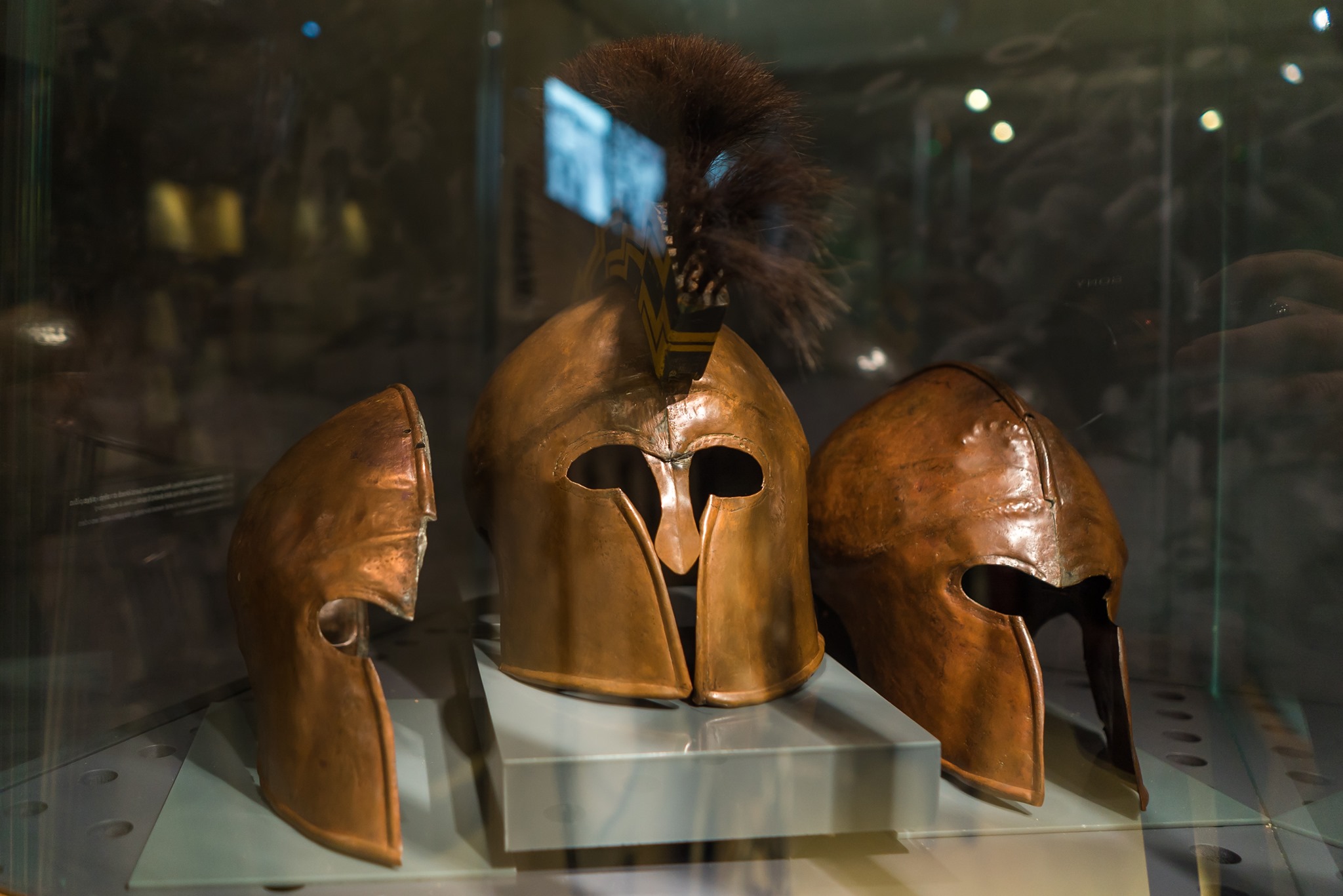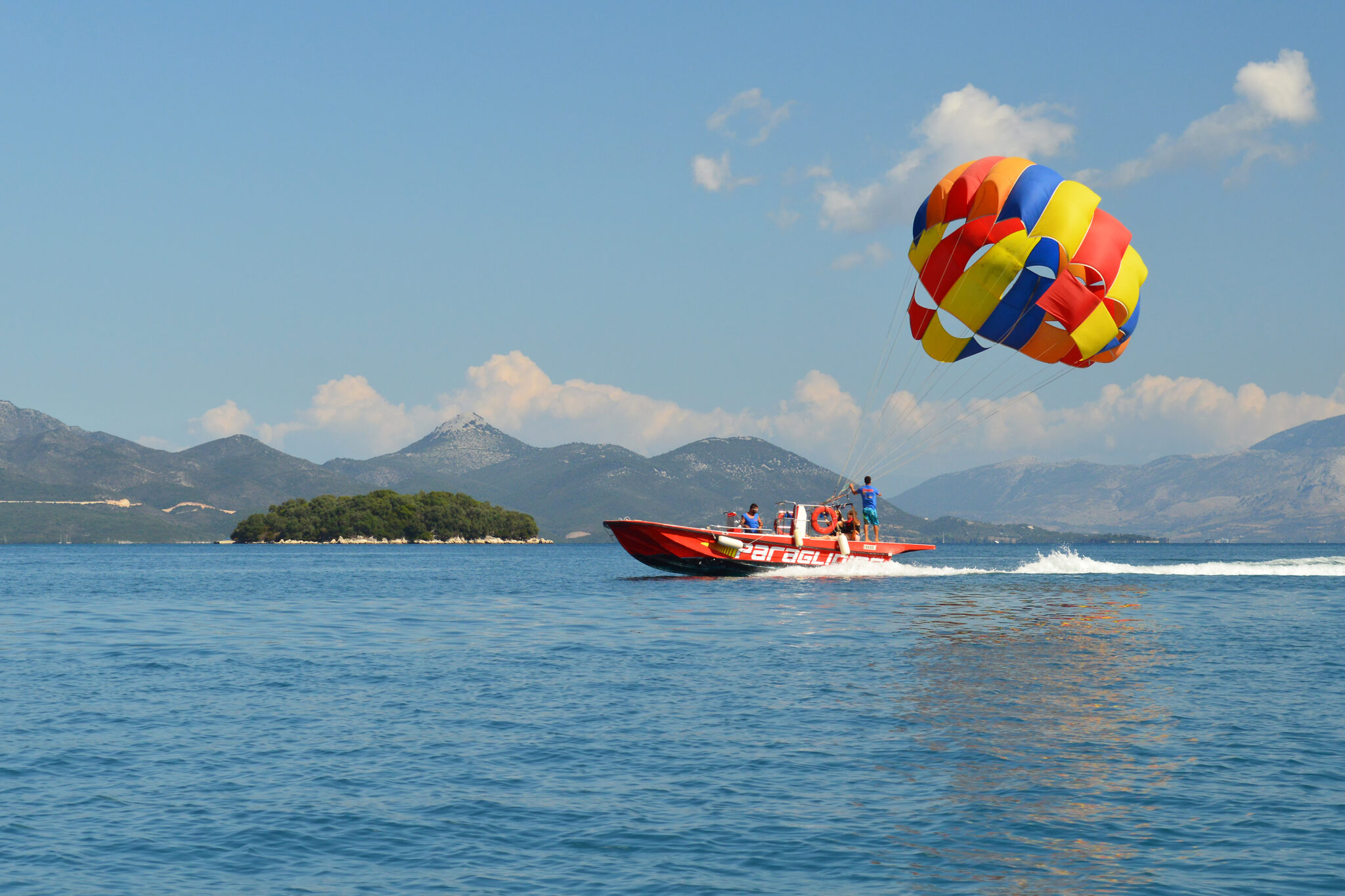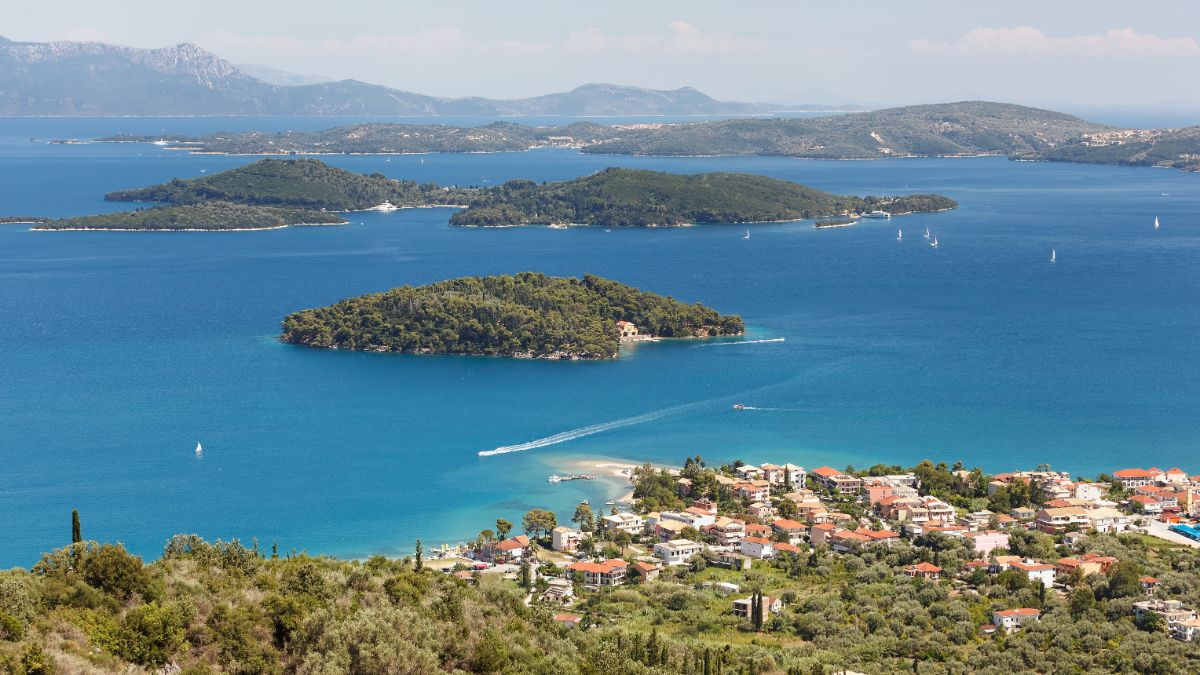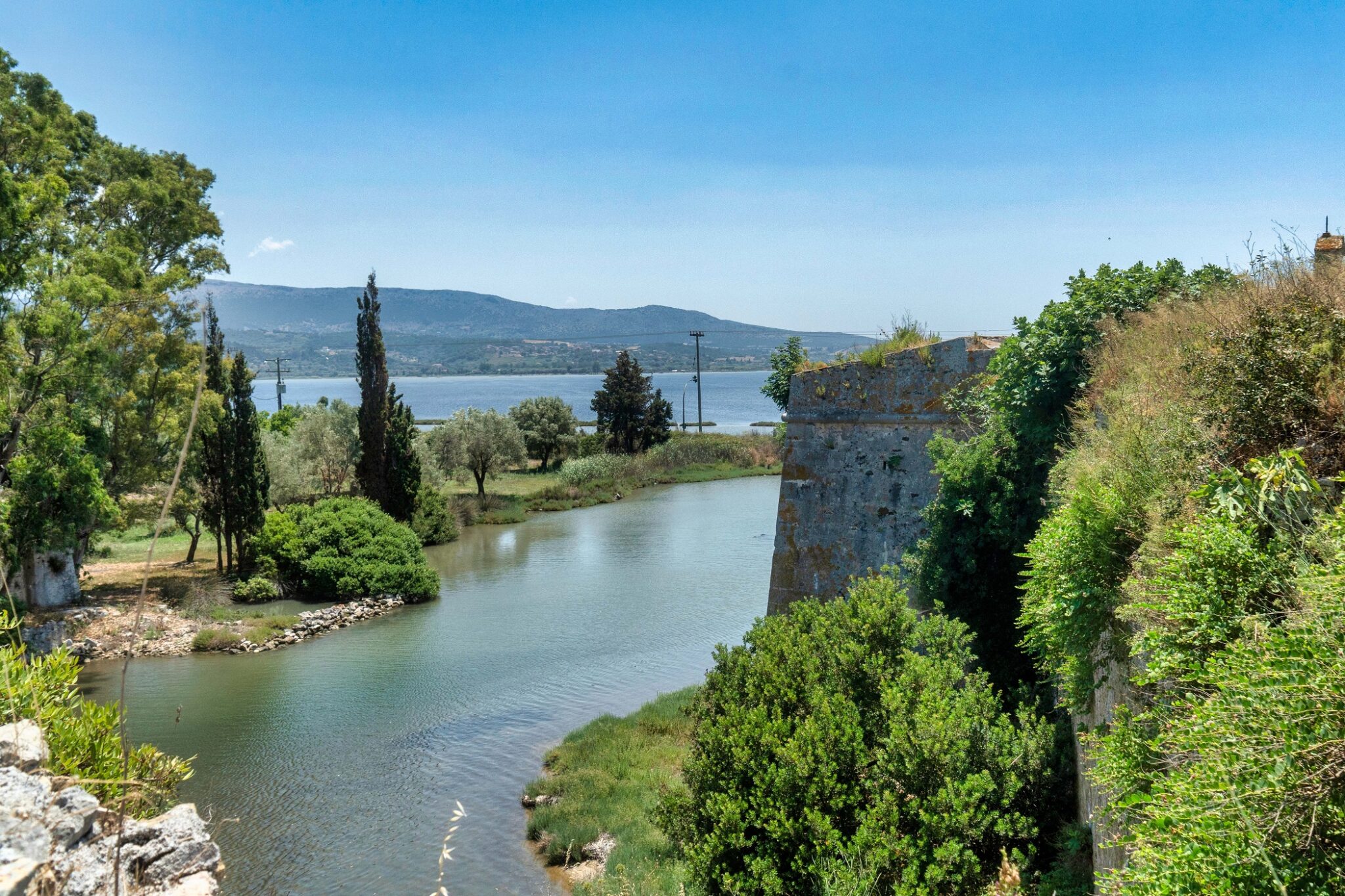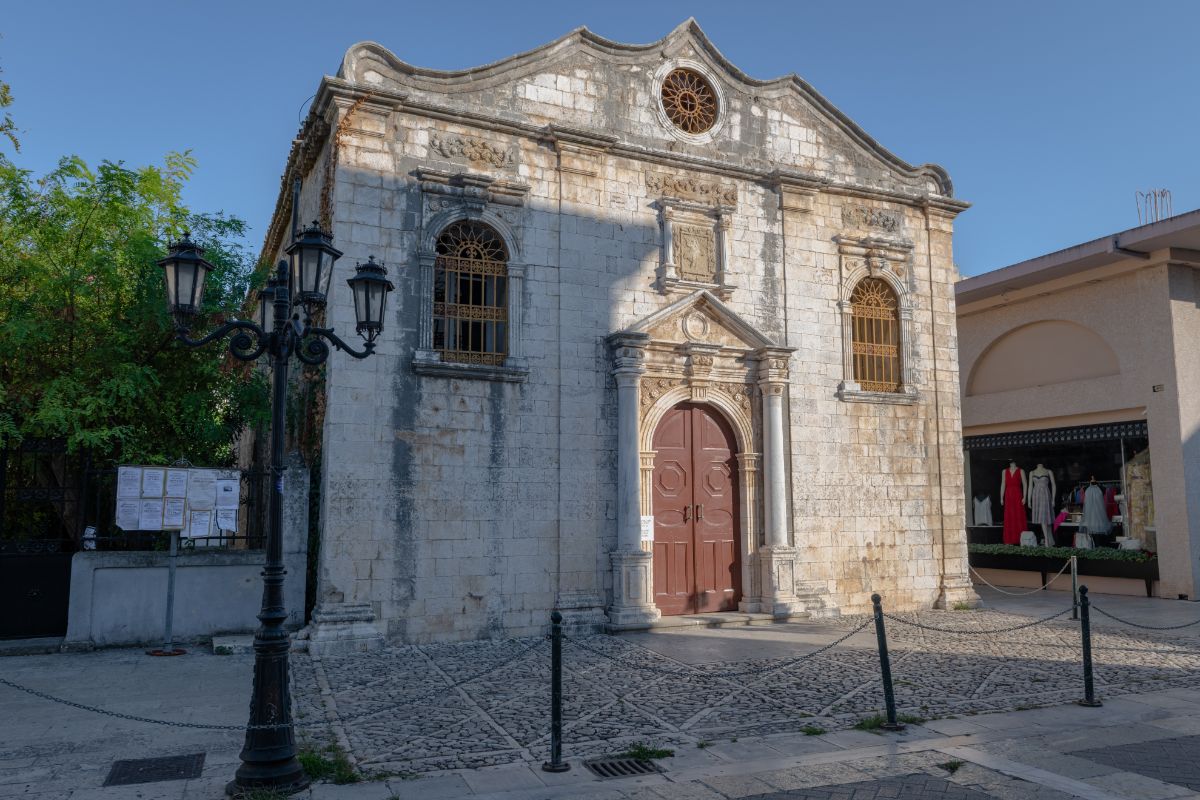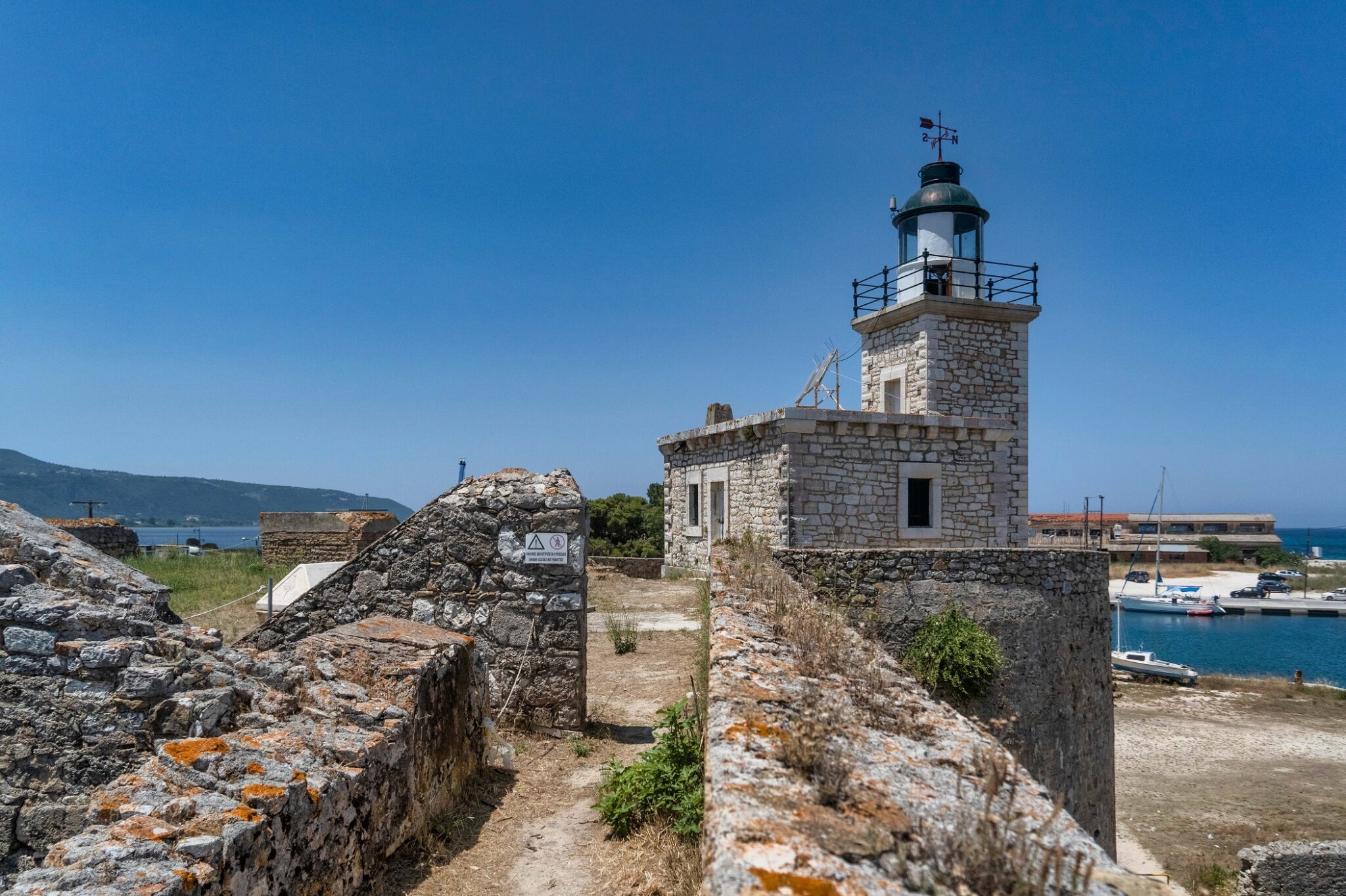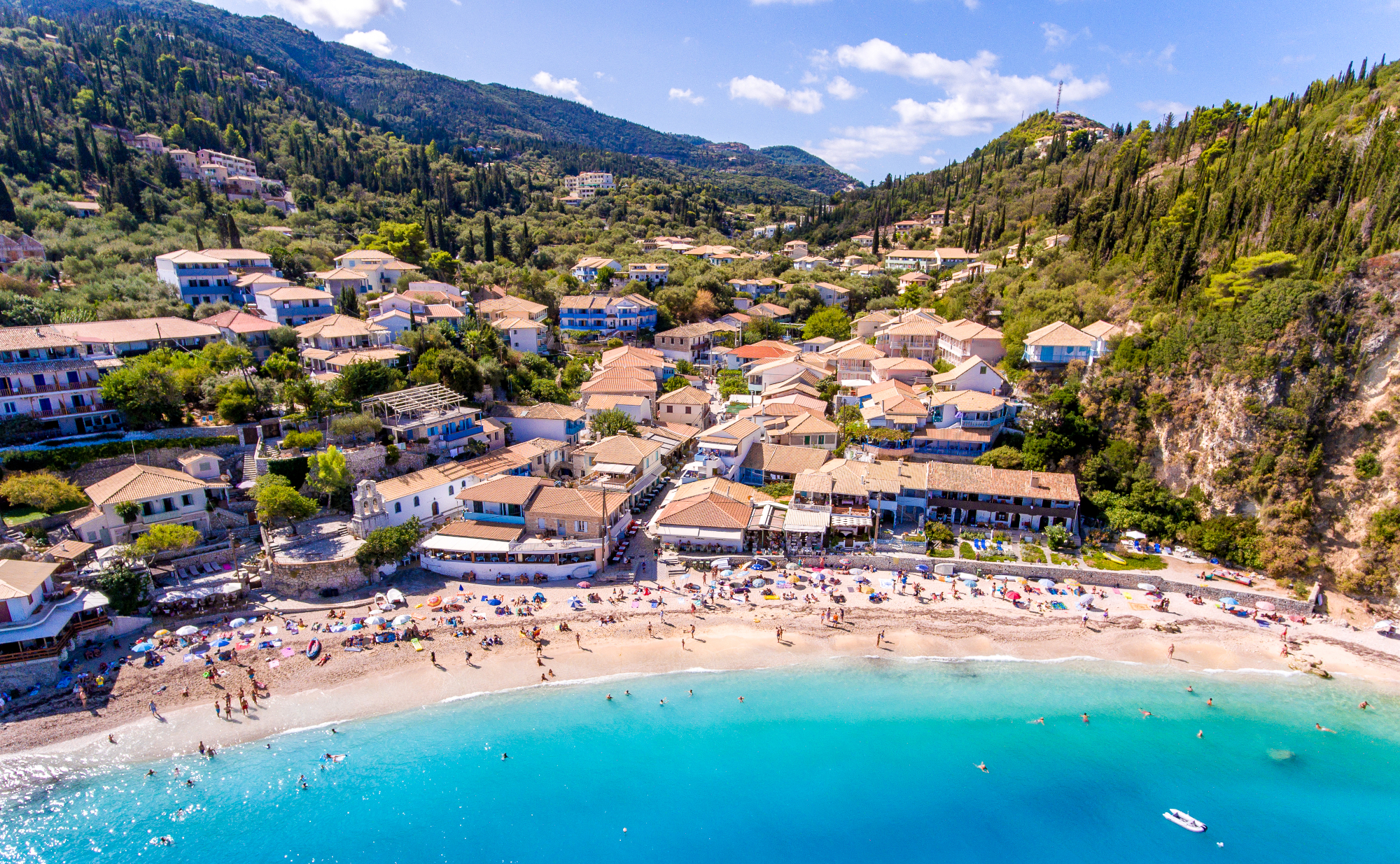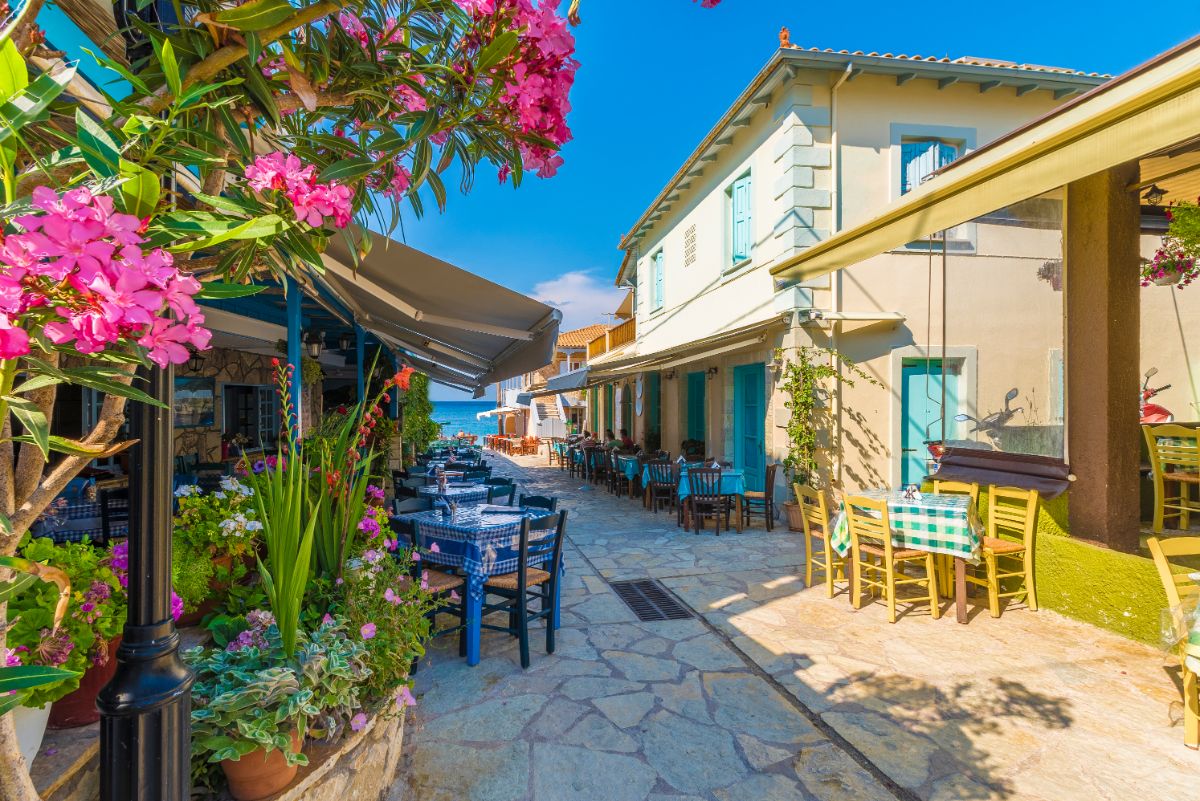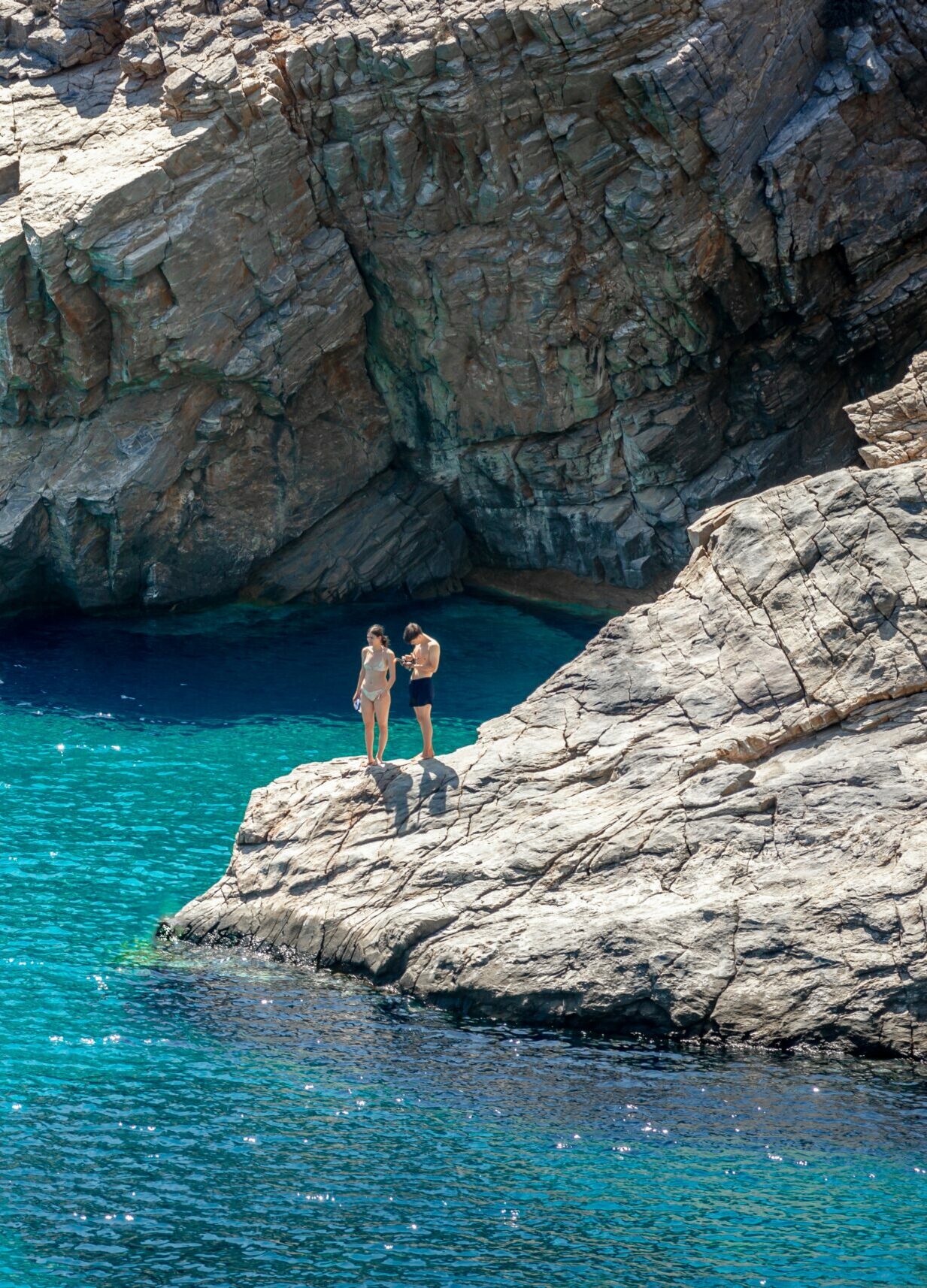You’ve lazed on the gorgeous beaches of Porto Katsiki, Egremni, Gialos. You’ve grazed on the saucy fish dish, Savoro, local spicy salamis and nougaty Madolato. It’s time to hop into your Avis car and get out and about to discover other aspects of this inspirational Ionian island.
The Castle of Agia Maura
From the first decade of the 14th century until 1684, it is this fortress that protected Lefkada from pirates and other invaders. Located at the island’s entrance, it is a model of medieval fortification architecture and its original structure, a walled enclosure reinforced by two moats, was built around 1300 by the Venetian ruler John Orsini. On the eastern rampart, you’ll see the church of Agia Maura, celebrated by locals on May 3 rd . Climb up the ramparts to enjoy a wonderful view. The original Orthodox church was originally built in 1472 by Eleni Paleologos Vrankovic (Paleologina), daughter of Thomas Paleologos, the Despot of Mistra. It was destroyed and later rebuilt in its present form in 1886-88. The icon of St. Maura, bestowed by Paleologina, is located in the town’s metropolitan church.
Coloured Sheet Metal Houses and Venetian Architecture The town of Lefkada as you see it today was built in 1684, when the Venetians occupied it and Francesco Morosini decided to move the capital from the castle of Agia Mavra to the neighbouring area of Amaxiki. After the destructive earthquake of 1825, the city was rebuilt under English supervision based on British anti-seismic regulations. The use of sheet metal on the sides of the houses dates from that period. Painted in different colours and decorated with plenty of flower pots, the houses are an impressive backdrop as one walks along the cobbled streets and alleyways of the historic centre. Among the houses are impressive Byzantine churches and Venetian mansions that survived the earthquake, such as the house of Angelos Sikelianos, the Zoulinou mansion, and the three-storey Stamatopoulou building.
Tour of the Market Area
The paved I.Melas street starts from the beach and passes through the market and the central square. The tables lining the street are always full of people, while city events, Philharmonic concerts, and Easter epitaphs take place here. The commercial pedestrian street runs through the historic centre until it meets A. Valaoritou street and Iron Polytechniou – Dimitrios Golemi avenue. The large promenade, Angelou Sikelianou street, is lined with café- bars and continues towards the Town Hall, the Archaeological
Museum and the area of Gyra. At the beginning of the pedestrian street, everyone stops to snap pictures at the characteristic bridge. Across the street is the pier where leisurely sunset strolls are particularly pleasant.
The Town Churches
Lefkada town is full of historic churches. Their architecture has obvious influences from the East, from the years of the Ottoman occupation, but also from the West. Most of them were built around the 17th and 18th centuries in the style of a single-aisle basilica. In the central square, take a look at Agios Spyridon (1685), a metropolis built during Venetian rule. Continuing on, you’ll see Agios Nikolaos (1830), Pantokrator, the Church of the Presentation of the Virgin Mary, and Agios Minas, built in a Baroque style.
The Garden of the Poets
Lefkada has a special connection with poetry and this is symbolically reflected in the ‘Garden of Poets’ or ‘Bosketo’, as the locals call it. In the well-kept square are the busts of some of the island’s literary legends, namely Aristotle Valaoritis, Angelos Sikelianos, Demetrios Golemi, Cleareti Dipla–Malamu and Lefkadian Hearn. Hearn’s story was particularly fascinating, as he became the national poet of Japan during the era of the Last Samurai, living under the name of Yakumo Koizumi.
The Gira Lagoon
Taking the road that connects Lefkada town with the castle, you may be surprised to find yourself overlooking a lagoon with herons, wild ducks and pelicans, which is indeed an incredible spot for birdwatching. The road to Gira (7 km) circles its western side and is well worth walking or cycling along. Up to the castle, and for about 1 km, the route ends at the bridge that connects the island with Acarnania. Before the bridge, the road of Gyra turns to the left, where the abandoned red villa Kalkani stands, and from there a small dirt road leads to Gira village with its pretty square, fish farmer’s houses and the church of Panagia Gira (from 1503). Opposite the village is the stunning Milos beach, also called “windmill beach” because on it are four remaining windmills (there were originally 12). The beach is only reachable by hiking or taxi boat.
The Venetian Olive Grove
The olive groves were planted under Venetian rule in 1684. The census of 1770 showed that a whopping 45,000 olive trees had been planted in 86 years. Although by now hotels and houses have been built in the scenic olive grove, you can walk or cycle there and enjoy the views, and even visit the church of Panagia Vlaherna, which was built in 1740, reachable from Faneromeni street. Follow the roads leading to the olive grove from the area of Kouzoudeli, where you’ll also find some nice traditional cafes.
The Town’s Marina
The marina in Lefkada town is considered one of the most modern in the Mediterranean. It has very good facilities, 620 berths for maneuvering, 280 winter berths and an area of 20,000 sq.m. It has a nautical club, conference centre, restaurants, cafes, a hotel and shops.(https://www.d-marin.com/en/marinas/lefkas/)
The Lefkata Lighthouse
The “Kava of Nira” at the tip of the cape in the southwest of Lefkada is a dramatically beautiful spot. The crashing waves of the Ionian Sea have carved their presence into the cliffs, as have legends of ancient lovers leaping to their death from them. Such was the story of the Lesbian lyrical poet Sappho, who is said to have ended her life there, which is why the rock was locally named “Sappho’s Leap” and later “Kava of the Lady”. The cape is also said to have been the ‘White Stone’ mentioned by Homer, and in ancient times sacrifices were made at the site of the lighthouse to appease the gods, which is why the sanctuary of Apollo, remains of which can still be seen, was built there. Today the 15-metre-high Doukato lighthouse, first lit in 1890, towers there.
Prigiponisia
Opposite Nidri is a scattering of “emerald” islands. The closest is Madouri, where the house of Aristotle Valaoritis stands. The other is world-famous Skorpios, bought by Aristotle Onassis in 1963, and where he married Jacqueline Kennedy in 1968. Near Skorpios is the island of Skorpidi. Also privately owned, it came into the hands of Onassis who filled it with rabbits, partridges and other fauna. Even further east looms the beautiful Meganissi.
Nidri
Until the late, 1960s Nidri was no more than an inconsequential fishing village. When Onassis bought the Skorpios across it, however, Nidri became the holiday base of famous personalities from around the world who came to socialize with the ship-owner. Undergoing rapid tourism development during the 1980s, Nidri quickly became Lefkada’s most popular tourist resort and is now packed with shops, hotels, restaurants, and bars. The views of the Prigiponisia and the opposite peninsula of Agia Kyriaki are magical and accompanied by picturesque scenes of boat masts crowded in the small surrounding harbours. Nidri is one of the most popular Ionian Sea hubs for sailors and a lively base for anyone interested in exploring the islands of Meganissi, Kalamos and Kastos.
Agios Nikitas Village
Quaint and old fashioned, this is Lefkada’s only remaining traditional seaside village and is highly popular. It has small hotels, rooms to let, taverns, café-bars, and shops. Walk along the main cobbled street to the small beach and choose a tavern to eat the catch of the day as you watch the world go by. Boats here will take you to the impressive neighbouring beach of Milos.
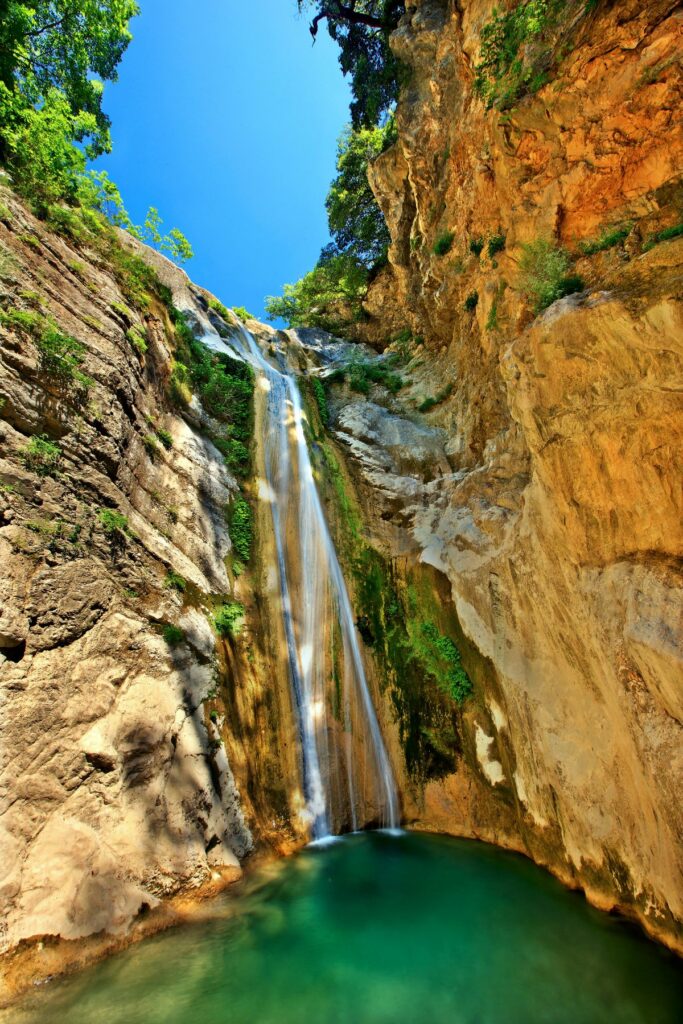
The Waterfalls at Dimosari
The area is a rare natural habitat with lush vegetation and is located very close to Nidri, above the village of Raches (follow the signs). The path leading to the waterfalls is shaded and marked, with steps in some places. As you arrive you will see the huge rocks from which water tumbles into a basin that invites you to take a dip in its cool, clear waters. A little further on is a larger waterfall that is easily reachable.
The Bee Gorge
Located near the village of Kavallos, towards the north side of the island, the gorge runs through an organized network of hiking trails that snake past the ruins of small settlements, old watermills, stone
bridges, wells, and springs. Cypresses, laurels, plane trees, oaks, oaks, wild roses, willows, crocuses and other beautiful flora abounds here, and there are many birds and other animals to spot, like grouses, partridges, weasels, and hedgehogs. Your car can take you up till the entrance of the canyon.
The Wells of Agios Donatos in Egklouvi (and the Famous Lentils)
Thirsty cyclists often stop Eglouvi plateau looking for water from one of the restored wells on the side of the asphalt road. Across them stands the church of Agios Donatos. On the eve of his feast day (6 to 7 August), after their evening meal, people consume the famous Eglouvi lentils and salted sardines before attending the celebration. The lentils of this village are a prized product that is expensive but particularly tasty, owing to the mineral-rich composition of the soil they grow in. On the road coming from Chortata you will see large areas of lentil crops. It is believed that the village of Eglouvi has existed since pre- Christian times. Around it are hidden threshing floors and low-rise vaulted stone constructions that exist in only this part of the island and were used for keeping the animals in while the threshing was taking place.
The Monastery of Kyra Faneromeni
Panagia (Virgin Mary) Faneromeni is the patron saint of the island and the protector of Lefkada’s people. Just outside the village of Fryni, this is a popular pilgrimage site where many weddings and baptisms are held. It is embraced by a thick pine forest and the view from the courtyard launches your gaze all the way across the main town, the northern part of the island and across to the mainland. It is believed that in ancient times the temple of Artemis stood here.
The church, first built in 1634 and reconstructed after two fires in the late 19 th century, was dedicated to Panagia Faneromeni because it is believed that the first icon of her miraculously appeared on a canvas here. The monastery building houses a museum with relics from this and other monasteries on the island. In the basement of the museum you’ll also find the Maritime Museum “Morina“, which presents wooden models of ships and nautical tools.
Read also:
Lefkada: Complete guide to the picture-perfect Ionian Island
Discover Zakynthos: The beautiful, green island of the Ionian Sea



